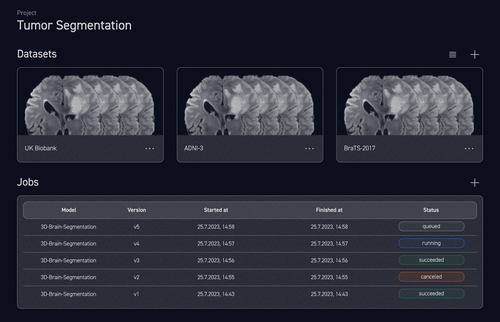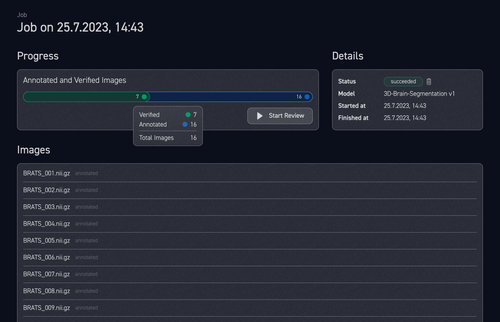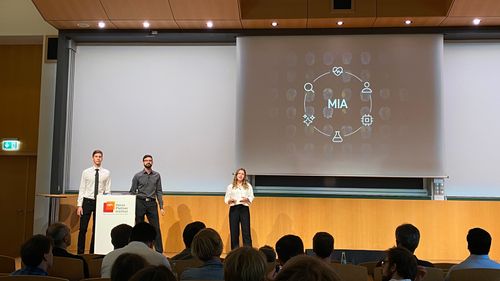MIA integrates with AI4H Focus Group's assessment platform as a pre-annotation engine. Researchers can use machine learning to quickly create segmentation suggestions. These can be collaboratively reviewed using the VISIAN Editor, facilitating a multi-user collaboration in establishing ground-truth data for unbiased AI models.
MDC researchers contributed their expertise and testing to develop MIA alongside VISIAN. As a result, MIA can now streamline their workflows with seamless dataset management and enable efficient review and annotation of numerous images.
Visian is a tool that empowers researchers to annotate and analyse MRI scans faster than ever before. Its aim is to enhance the work of scientists in various fields with new approaches, features and use of machine learning to enable better, faster and more qualitative research.
By integrating the VISIAN editor with BMEII's medical imaging platform, we have leveraged mutual strengths to enhance both systems. This collaboration has provided us with extensive domain expertise and critical insight into user requirements, enabling us to further refine our approach to medical image analysis.















